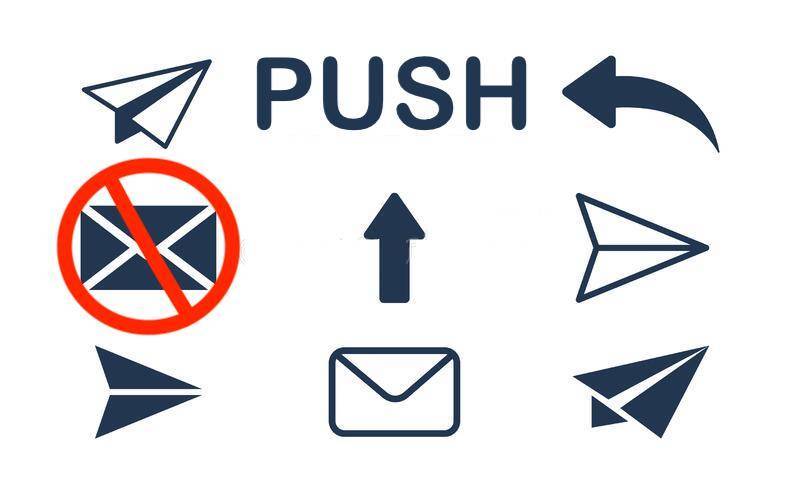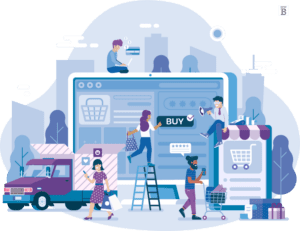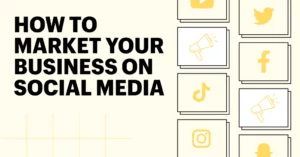Why It Pays to Get Pushy with Your Marketing — and How

When it comes to customer engagement and building your brand, it literally pays to be pushy. That’s because whether you’re nurturing leads, wooing previous customers, or reaching out to your most loyal fans, the most effective way to build connection is through communication.
Not too long ago, that meant email. But right now, the newest and best marketing channel through which to communicate is via push notifications: short, targeted messages that pop up on the screen of a customer’s mobile device or PC monitor.
For ecommerce stores, push notifications can be a golden ticket for customer retention. It’s a terrific way to reach — and re-engage — first-time visitors to your store who have not yet converted or come back. But wait, there’s more!
Back in the day, a well-worn marketing adage held that “He who has a thing to sell, but goes and whispers in a well, is not so likely to get the dollars as he who climbs a tree and hollers.” That was true then, but this is now.
Nowadays, hollering about your product to the world at large is liable to get you tuned out — click! In addition, a lot of your soundwaves would fall on deaf or at least uninterested ears. Today’s more targeted and effective strategy is akin to whispering not into a well, but directly into your customer’s ear.
To take the metaphor a few steps further, push notification marketing is like whispering into your customer’s ear while you stroll the length of the block with them. By the time you reach the corner, you and your customer are, if not quite friends yet, at least getting acquainted.
That’s the effect of what’s known as “drip marketing”: a steady series of messages at carefully calculated intervals sent to individuals who have visited your website or otherwise expressed interest in your product(s). These messages may be strategically timed, precipitated by certain actions on the individual’s part, or a mixture of both.
According to software firm Market2Lead, companies who use drip marketing slash the time it takes to make a deal by 23%.
The average consumer has a lot of pushy not-quite friends. But forget the clichéd visual of the fast-talking old school salesperson; these not-yet friends are apps and websites. Notifications are pushed through the app or from the website — hence the nomenclature — to the user’s mobile device.
Push notifications may be sent at any time. Their target doesn’t have to be using an app or their phone; in fact, the app doesn’t even have to be open. The average smartphone user looks at their screen 221 times a day. That’s literally every 2 minutes of an 8-hour day, or roughly every 3 minutes in a 12-hour day.
So sooner or later (probably sooner), they’re going to see your message. You can even use emojis in your notification to really catch the device user’s eye and set a friendly tone.
Of course, you obviously can’t stroll to the corner with every single customer, one at a time — even metaphorically. You’ve got to be able to scale. That means automating your push notifications. Fortunately, there are tools that make it easy to do so.
And you don’t even need an app for that! The leader of the pack in push notification automation is PushPro. It’s powerful, simple, and easy. PushPro doesn’t require a native app and takes about five minutes to install; another few minutes later, you’ll be creating and sending out automated PushPro notifications like a boss. Here’s how it works.
First, install PushPro either as a plug-in extension or manually by adding a single Javascript file plus a few lines of code to your website’s HTML. No need to set up a mailing list, as you would have to do for traditional email marketing!
Visitors to your online store are then prompted to opt into receiving your push notifications with just one click. Opt-in requests are fully customizable, too. No personal data is collected from those visitors, so you’re 100% sure to remain in compliance with the General Data Protection Regulation (GDPR) and similar rules.
Furthermore, PushPro lets you define your own audience, creating assorted segments via attribute rules. PushPro automatically calculates the estimated size of each segment and the reached target group. This lets you create even more personalized and relevant notifications.
By this point, you’re metaphorically strolling all the way around the block, still whispering in your customer’s ear, so they’re really getting to know and like you — and your brand. That in turn predisposes them to shop with you.
PushPro notifications can be automated several different ways. You can set up drip messages; send notifications after a certain web page is visited; and/or you can set a trigger that generates a notification, such as when someone new subscribes to your website or an almost-customer abandons their shopping cart.
For example, you’ll want to welcome your new subscriber, while you might set up a message to push to the almost-customer telling them that you’ve saved their shopping cart and will discount their order by X% if they complete their purchase by X o’clock.
PushPro’s template builder lets you build an entire push campaign that reflects your brand. You can test and preview messages before you push them; you can also schedule notifications and save them as drafts. Basically, you’re creating the ultimate conversion funnel.
Finally, when someone opens a push notification you’ve sent them, it yields immediate results in real time. So PushPro can start crunching your data as fast as it comes in. Campaign statistics and other assorted reports give you all the metrics you need to evaluate the effectiveness of your campaign(s).
Communication. Engagement. Segmentation. Personalization. Promotions. Analytics. Plus every PushPro push notification drives traffic and conversions with a custom Call to Action (CTA) button. So get pushy, and put push notifications to work in your ecommerce business!







